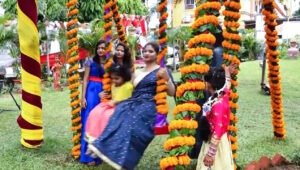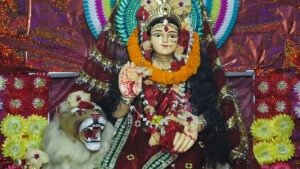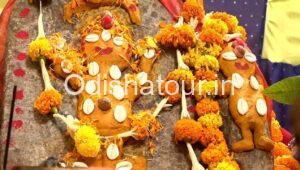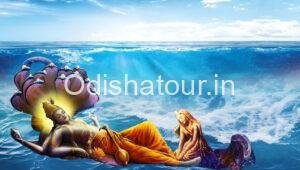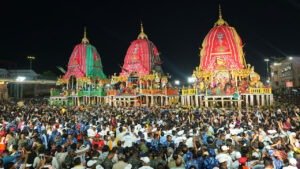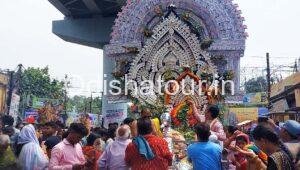Boita Bandana & Baliyatra: The Maritime Soul of Odisha: The Chant of “Aa Ka Ma Boi” As the first rays of dawn shimmer over the rivers of Odisha, the air fills with a melodious chant—“Aa Ka Ma Boi… Pana Gua Thoi. Pana Gua Tora. Masaka Dharam Mora”. This age-old hymn, sung during Boita Bandana (Danga Bhasa) on Kartika Purnima, resonates with the rhythm of waves and the pulse of Odia heritage. It’s not just a prayer; it’s a living echo of a civilisation that once ruled the seas and brought with it the spirit of bravery, devotion, and business.
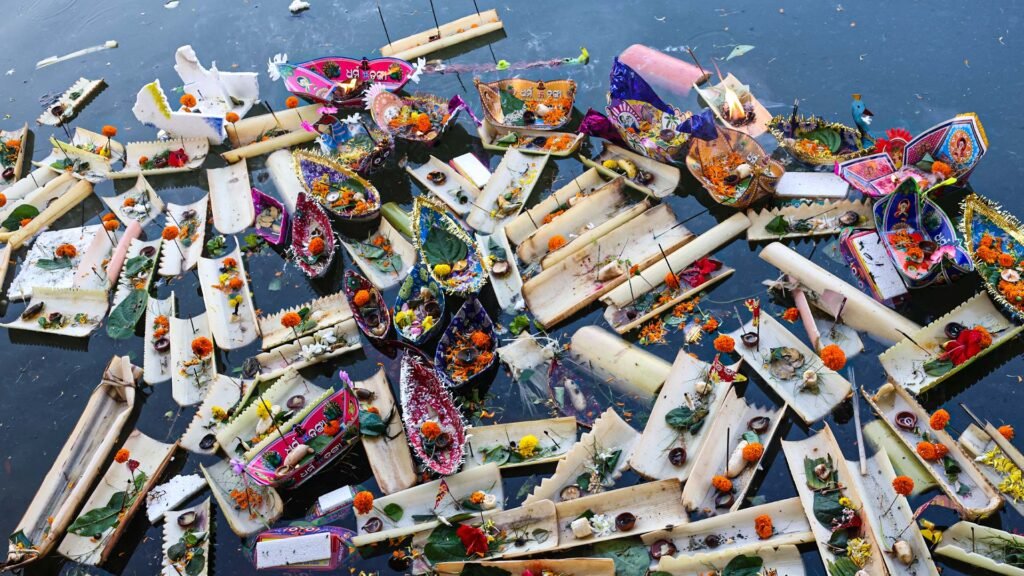
Kartika—The Month of Light and Liberation :
The month of Kartika, considered the holiest in the Odia calendar, is revered as Dharma Masa, a time for purity and pious living. People rise before dawn, bathe in rivers, visit temples, and light rows of clay lamps—transforming every village, riverbank, and courtyard into a sea of flickering devotion. The full moon on Kartika Purnima marks a holy end. Devotees believe that taking a holy dip on this day grants moksha (liberation). The day also commemorates the divine Rasa Leela of Lord Krishna, celebrating love, faith, and cosmic harmony.
Science and Seamanship: The Winds of Wisdom
Beyond the symbolism lies remarkable science. The timing of Kartika Purnima coincides with the northeast monsoon, a period of favourable winds blowing from India toward Southeast Asia—perfect for sea voyages. Months later, the returning southwest monsoon brought the Sadhabas home. This mastery over wind patterns, star navigation, and shipbuilding reveals the advanced maritime knowledge and adventurous spirit of ancient Odisha—centuries before the age of European exploration.
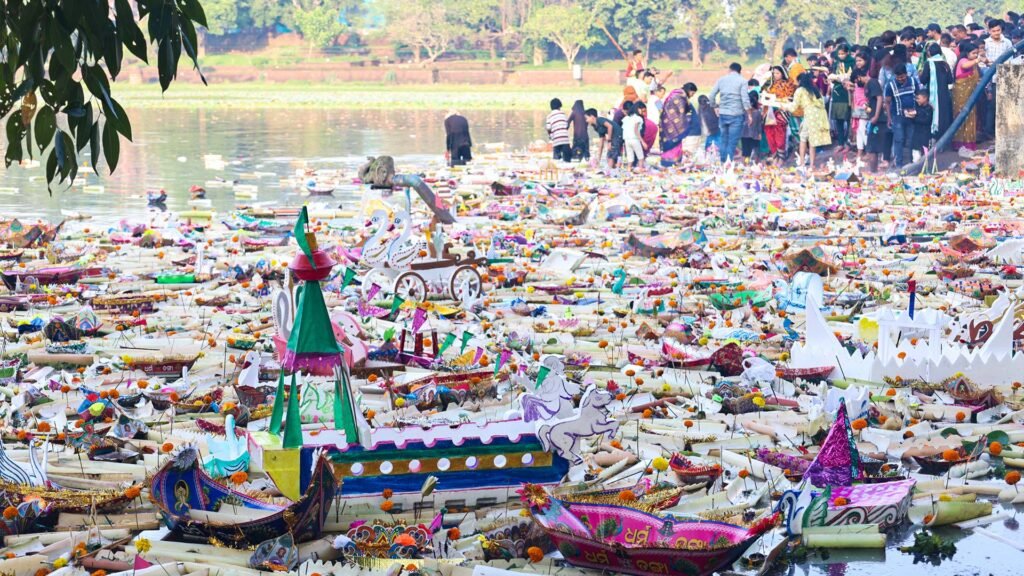
Global Cultural Connections with Boita Bandana:
The legacy of Boita Bandana and Baliyatra extends far beyond Odisha’s shores. Traces of Kalinga’s cultural influence can be found in the architecture of Indonesia’s temples, the Ramayana carvings of Cambodia, and even in the shared linguistic and culinary traditions of Southeast Asia. These connections testify that Odisha, once known as Utkala, was not an isolated land but a maritime bridge between India and the world.
Jagannath Culture and Kartika’s Sacred Essence:
The festival also mirrors the Jagannath tradition—the heart of Odia spirituality. During Kartika, devotees observe Habisha Brata, practising simplicity and devotion. At the Puri Jagannath Temple, the Lord is adorned in the magnificent Raj Rajeshwar Besha, symbolising supreme divinity and cosmic balance. The rituals of this month embody the eternal ideals of compassion, renunciation, and the cycle of spiritual journey—values that define Odisha’s cultural consciousness.
The Eternal Message of the Boita:
In every floating boat and every glowing lamp, there lies a message of peace, prosperity, and remembrance. Boita Bandana and Baliyatra together represent not only Odisha’s maritime history but also its living identity—an enduring reminder of a people who once dared to dream beyond horizons. As the chants of “Boita Bandana Ho!” rise with the morning breeze over the Mahanadi, Odisha once again honours its ancestors, its seas, and its undying spirit—a civilisation that sailed not just with ships, but with faith.
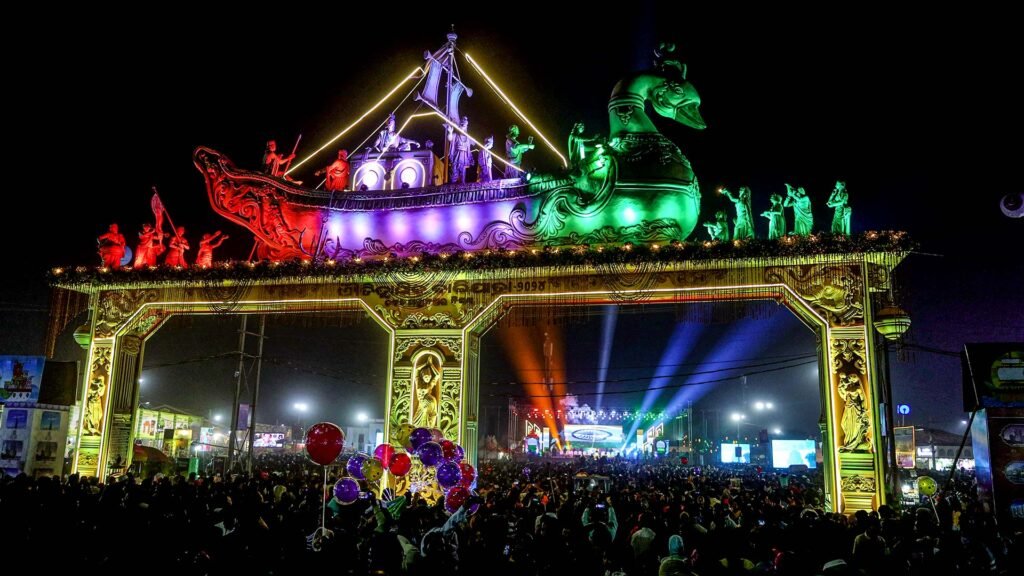
Baliyatra Festival
Baliyatra 2025 – The Grand Voyage of Odisha’s Maritime Glory: Every November, the silver city of Cuttack transforms into a sea of joy, culture, and heritage during the Baliyatra Festival—one of the largest open trade fairs in Asia. The 2025 edition, happening from 5 to 12 November, celebrates the timeless spirit of the Sadhabas—the brave Odia sailors who once voyaged across the seas to trade with Bali, Java, and Sumatra. As the golden boats float on the Mahanadi River during Boita Bandana, the air fills with chants of “Aa Ka Ma Boi, Pana Gua Thoi”—symbolising prosperity and adventure. This year’s celebration shines brighter, with Indonesia as the partner nation, reflecting the shared cultural bond that has spanned centuries.
Visitors can explore over 1000 stalls offering traditional crafts, silver filigree, Odia handlooms, local delicacies, and international exhibits. New attractions include a 3D maritime gallery, a vintage car zone, and an Indonesian art pavilion. Evenings come alive with folk music, dance performances, and the aroma of Dahibara Aloodum, Chhena Poda, and Gupchup filling the festive air.
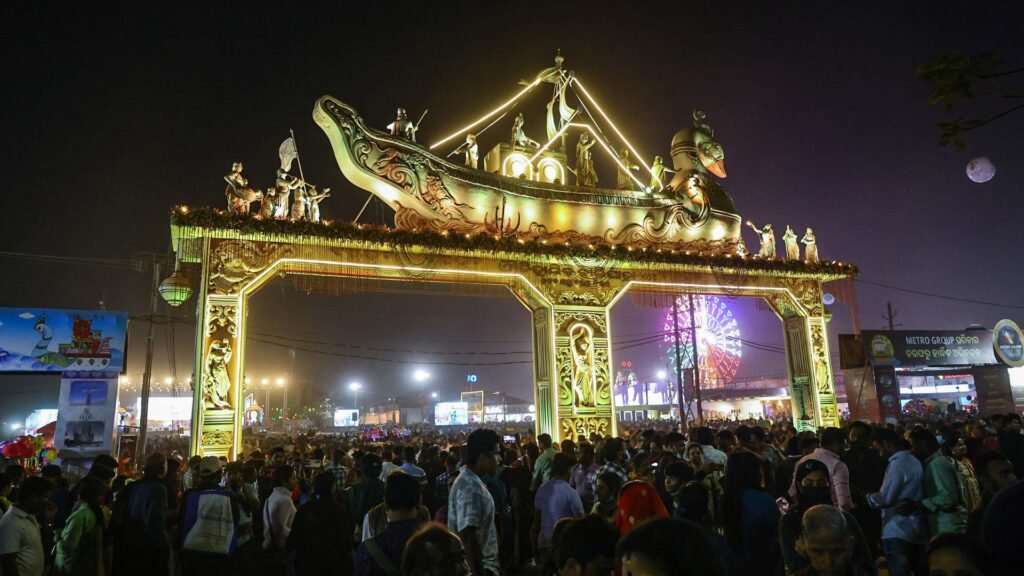
The Festival of Voyages and Heritage From the Mahanadi to the World—A Fair that Tells the Story of the Sea
Following the sacred morning of Boita Bandana, Odisha’s coastline transforms into a canvas of celebration as Baliyatra—Asia’s largest open-air trade and cultural fair—begins. The word Baliyatra means “Voyage to Bali,” a direct tribute to the ancient maritime expeditions. The grandest celebration takes place on the banks of the Mahanadi River in Cuttack, where the festival stretches for over a week, drawing millions of visitors from across India and abroad.
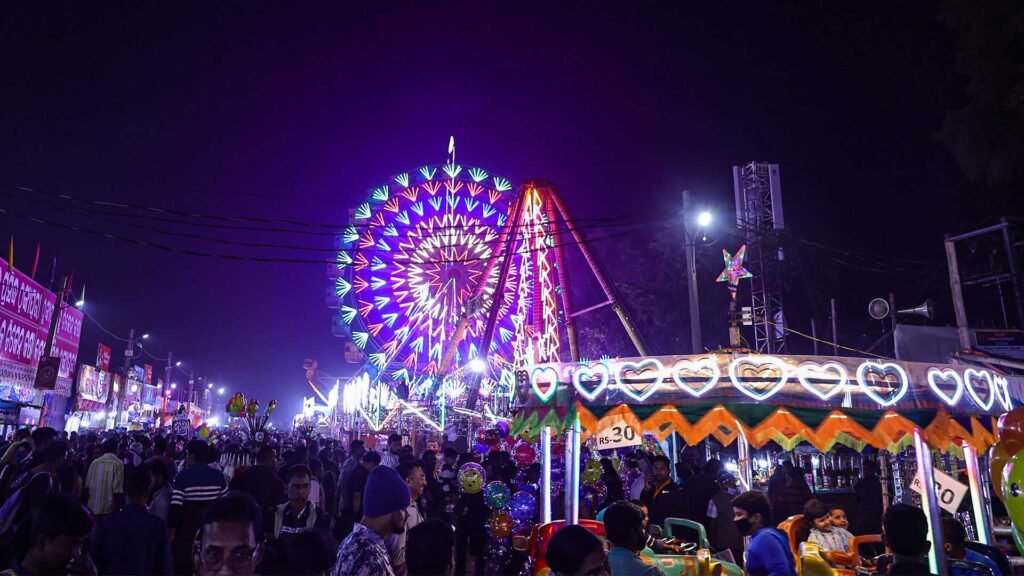
The History of Baliyatra:
The roots of Baliyatra trace back to the time of Kalinga’s overseas trade empire, flourishing between the 3rd century BCE and the 15th century CE. Odisha’s ancient ports—Tamralipti, Manikpatna, Palur, and Chelitalo—served as global gateways for commerce and culture. Bali Yatra celebrates not just trade but the adventurous Odia spirit that sailed beyond horizons. It is said that as the Sadhabas departed, women performed Akhaya Trutiya rituals, and upon their return, the land rejoiced with Baliyatra festivities, symbolising homecoming, prosperity, and cultural exchange.
Rituals and Traditions of Baliyatra:
- Floating of Boitas: People continue the morning ritual of floating miniature boats in rivers, honouring the ancient sailors.
- Lamp Lighting: Evenings glow with thousands of diyas illuminating the Mahanadi banks, symbolising guidance for safe sea journeys.
- Cultural Programs: Folk dances, Odissi performances, maritime exhibitions, and Jagannath bhajans narrate Odisha’s seafaring legends.
- Trade Fair: Hundreds of stalls display silver filigree, handloom textiles, Pattachitra art, brass crafts, and Odia delicacies like dahibara, gupchup, and rasabali.
- Modern Fusion: Alongside tradition, the fair includes amusement rides, tech displays, and youth cultural contests—blending the ancient with the contemporary.

